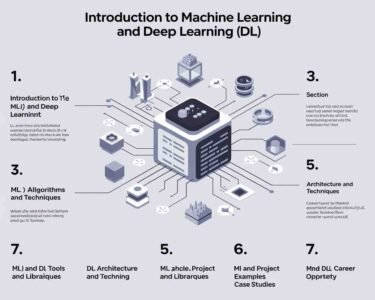Which Algorithm Should we select for our problem-solving
When dealing with structured data, algorithms become essential tools for solving various coding problems. They allow us to perform operations such as sorting, searching, insertion, and deletion and provide specific steps to follow in problem-solving.
However, there are often multiple ways to solve the same problem. So, how do we decide which algorithm is the best fit?
In real life, we tend to choose solutions that are efficient and take less time or effort. Similarly, when solving coding problems, we aim to use algorithms that consume less time and fewer resources. We apply the same logic in algorithm selection as we would choose a shorter or faster road to reach a destination.
The main factors to consider when selecting an algorithm include:
- Time
- Space
- Other Resources
Let’s discuss these factors in more detail and how they impact the selection of algorithms.
Time Complexity
Time complexity refers to the amount of time an algorithm takes to complete its task, depending on the size of the input. One that takes less time to execute is generally preferred when choosing an algorithm. Let’s look at an example:
We want to calculate the sum of numbers from 1 to 10 (i.e., 1 + 2 + 3 + … + 10 = 55). There are different ways to solve this in Python:
Method 1: Using a Loop
def sumOfN(n):
sum = 0
for i in range(1, n+1):
sum += i
return sum
number = int(input('Enter a number: '))
print(sumOfN(number))
Method 2: Using a Formula
def sumOfN(n):
return (n*(n+1))//2
number = int(input('Enter a number: '))
print(sumOfN(number))
Both methods return the same result, but the algorithms are different. The key question is: Which one should we choose?
To decide, we evaluate the time complexity:
- In Method 1, we use a loop to sum the numbers. This means the time complexity is O(n) because the loop runs
ntimes. - In Method 2, we use a direct formula, which has a constant time complexity of O(1) since the number of operations does not depend on the input size.
Clearly, Method 2 is more efficient in terms of time complexity.
Space Complexity
Space complexity refers to the amount of memory an algorithm requires to run, relative to the size of the input data. While time complexity focuses on how long an algorithm runs, space complexity measures how much space it needs.
For example:
- In Method 1, the loop creates and stores intermediate results (the
sumandivariables), which might use more memory, especially for large inputs. - In Method 2, the space complexity is minimal as only a few variables are needed to compute the result.
When selecting an algorithm, those with lower space complexity are generally preferred, especially for large datasets or memory-constrained environments.
Other Resources
In some cases, the choice of an algorithm might depend on additional resources, such as processing power, input/output efficiency, or hardware limitations. These factors usually depend on the user’s device or the specific environment where the algorithm is deployed. Most of the time, resource constraints are treated as constant, but they should still be considered when working on performance-critical applications.
Key Factors in Algorithm Selection
So, which factor should be the first priority when selecting an algorithm? Here’s the breakdown:
- Time complexity is usually the most important factor, as faster algorithms save computational time and improve efficiency.
- Space complexity is the second priority, particularly in memory-constrained systems.
- Other resources come last, as they are often device-specific and do not directly influence the algorithm itself.
In summary:
- Choose an algorithm that minimizes time complexity if you are working with large data sets or need quick results.
- Consider space complexity when dealing with memory limitations or when the input size could be very large.
- Lastly, take resources into account, especially for applications with specific hardware or environmental constraints.
By evaluating these factors, you can make informed decisions on which algorithm is best suited for your problem-solving needs.




